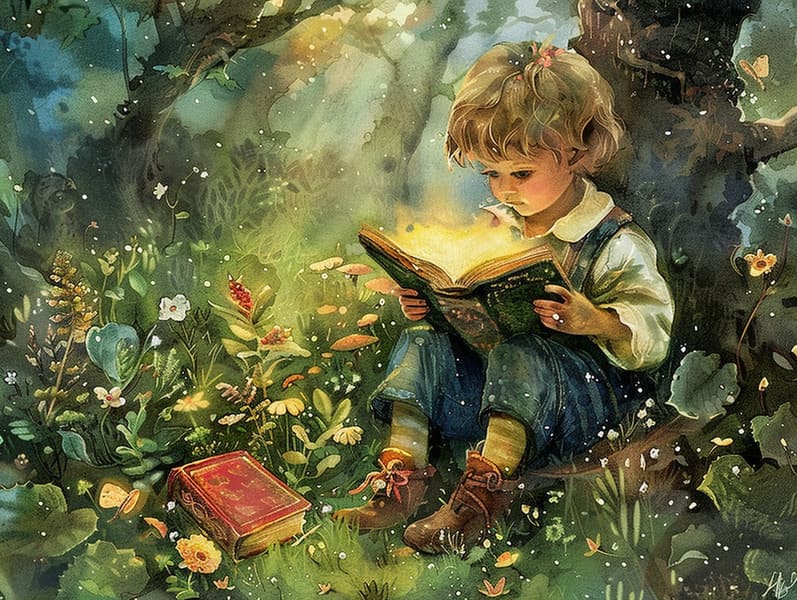Exploring the Roots of Fairy Tales to Read with Their Timeless Beauty.
Exploring the Roots of Fairy Tales to Read with Their Timeless Beauty.
Blog Article

Historical fairy tales have legendary status. These tales have been conveyed from one generation to the next millennia before they were ever documented. They arose from a variety of backgrounds, including African traditions. They were initially narrated among grown-ups, often carrying themes and messages concerning the societal norms and beliefs of the time.
The famous Grimm duo, Jacob and Wilhelm (the Grimm brothers), were among the first to collect and release many of these beloved fairy tales. Their collection, "Grimm's Fairy Tales," included classics like "Ashenputtel," "The Bread Crumb Trail," and "Schneewittchen," which have since become classics in the world of traditional fairy tales. Similarly, Hans Christian Andersen's magical fairy tales, such as "The Story of the Little Mermaid," and "The Duckling that Could," have touched hearts worldwide, establishing their place in the pantheon of treasured fairy tales.
Despite their age, classic fairy tales remain as meaningful as ever, especially as nighttime stories for kids. These whimsical stories are now available in multiple formats, including colorful picture books, captivating animations, and digital storybooks.
Their persistent charm can be ascribed to several delightful features:
Valuable Lessons: Old fairy tales often convey important moral lessons. Fairy tales like "The Story of the Boy Who Cried Wolf" teach the importance of being truthful, while "The Story of the Tortoise and the Hare" show the qualities of resolve and modesty. These tales offer young ones clear distinctions between truth and falsehood, forming their moral compass in a mild yet significant way.
Compassion and Insight: Fairy tales frequently present personalities facing obstacles and hardships, fostering young listeners to feel with their struggles and applaud their triumphs. For instance, "The Tale of Beauty and the Beast" demonstrates the merit of looking beyond appearances to acknowledge the real character of a person, strengthening kindness and recognition.
Cultural Understanding: Many traditional fairy tales are imbued with the cultural contexts from which they were born. Exploring these fairy tales can provide fascinating glimpses into different beliefs, promoting a sense of world appreciation and recognition.
Creativity and Imagination: The fanciful elements in traditional fairy tales—magical beings—enliven children’s innovations. These tales lead readers to supernatural realms, invigorating inventive thinking and a sense of fascination that endures a lifetime.
Traditional fairy tales are not only magical but also edifying. They work as bewitching tools in fostering various brain and heart skills in young ones. When ancient fairy tales are spoken, they develop speech development by offering new words and detailed sentence structures. This practice also promotes auditory skills and mental focus, as little ones follow the story, expectant to see what happens next.
Furthermore, deliberating the themes and characters of fairy tales can promote thought processes and problem-solving abilities. Young readers learn to discern patterns, anticipate outcomes, and grasp cause and effect. These discussions also promote kids say their thoughts and feelings, adding to their emotional intelligence.
In today’s technological era, the abundance of online storybooks has made these stories more attainable than ever. Internet resources and apps present extensive collections of ancient fairy tales that can be perused or listened on anytime, anywhere. Fairy tales told out loud are particularly well-received, featuring an engaging way for the young to take part in these charming stories. Read-aloud stories and spoken videos transport characters and settings to life, often enhanced by entrancing harmonies and tunes that enhance the storytelling experience.
The unfading fascination of ancient fairy tales lies in their ability to shift to current eras while keeping their core messages. Contemporary retellings of these narratives often introduce more inclusive characters and modern settings, making them relevant to today’s audience. However, the key lessons of boldness, kindheartedness, and fair-mindedness remain unchanged, continuing to connect with audiences of all ages.
Timeless fairy tales also offer a sense of comfort and knowability. They impart a neat narrative with a distinct beginning, middle, and end, often coming to a close with the finalization of conflicts and the triumph of truth over falsehood. This dependability can be soothing for young ones, granting a sense of sturdiness in an dynamic world.
Ancient fairy tales continue to spellbind and coach new generations, maintaining their attraction and pertinence in modern society. As nighttime stories for kids, they furnish a perfect blend of allure and teaching, promoting moral values, empathy, and creativity. The presence of online fairy tales and the well-liked nature of fairy tales voiced ratify that these timeless stories remain available to new generations.
By preserving and relating these narratives, we continue to pay tribute to the rich tapestry of folklore and cultural heritage. Whether you are accessing a richly illustrated book, delving into a cyber library, or listening on an read-aloud book, the loveliness of classic fairy tales is always within reach. These fairy tales convey of the continued presence of stories and its ability to link us across generations and cultures.
No matter if you are accessing a gorgeously illustrated book, enjoying a cyber collection, or listening via an spoken story, the fascination of old fairy tales is always within reach.
These narratives reveal of the eternal strength of narratives and its ability to draw us together across eras and regions, establishing a link that delights check it out and instructs alike.